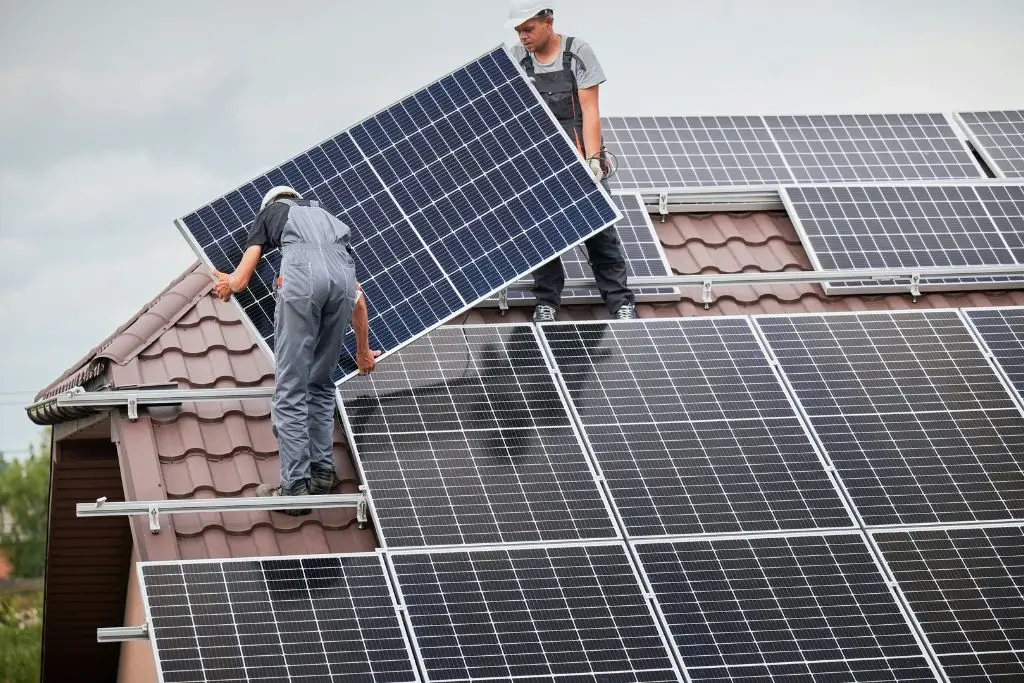In the past decade or so, solar roofs for residential properties have become popular. Maupin Roofing stays up to date with all things roofing, and we’ve seen the development of solar setups over the years. Now, homeowners get to enjoy smarter and more efficient solar systems, so it’s understandable why many people are considering getting them. But before you make the leap, you’ll want to understand exactly how they work, what the options are, what the pros and cons look like, and whether it’s a good fit for your home.
How Do Solar Roofs Work?
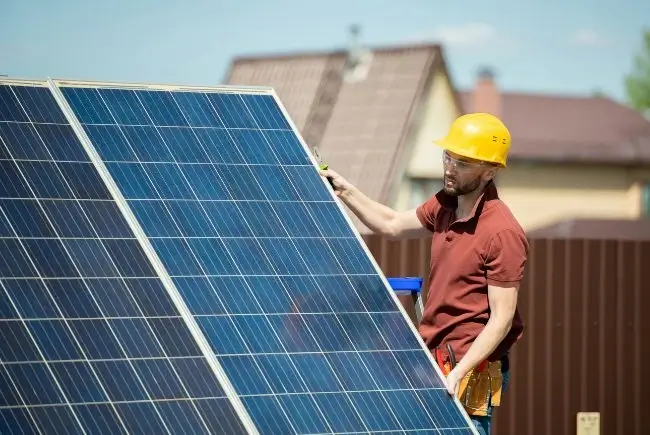
Solar roof technology (or solar panels, if you’re going the more traditional route) takes the sun’s energy and turns it into electricity. This energy production is possible because of the photovoltaic (PV) cells (also known as solar cells), which are the little silicon wafers inside the panels. When sunlight hits them, they knock electrons loose and create a flow of electricity. That electricity is direct current (DC), and since your home uses alternating current (AC), an inverter converts it.
From there, your home can use the electricity harvested from solar power generation right away. If you’re not using it all at once, the extra power can be sent back to the grid or a battery storage for later use. Solar roofs can perform well in places like Oklahoma City, where homes can get around 4.5 to 5 hours of strong, usable sunlight per day. That’s more energy than needed to power a good portion of your home’s daily energy needs.
Different Types of Solar Roofs
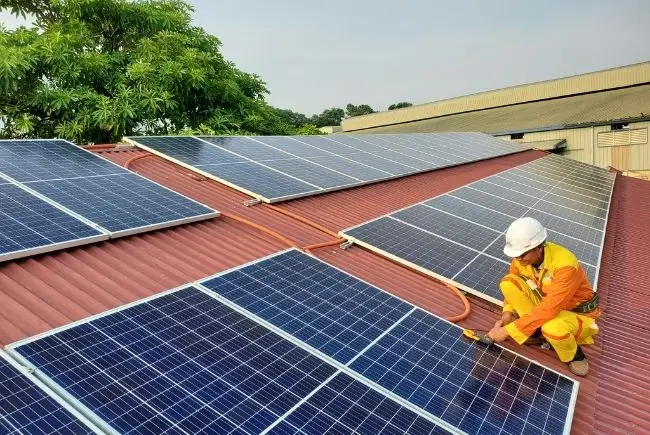
1. Traditional Solar Panels
These are the large, flat solar panels installed on racks above your existing roof. They’re visible, but they’ve come a long way in terms of appearance. They’re also usually the most affordable and widely available. Traditional solar panels are reliable, easy to service, and tend to give you more watts for your buck. Plus, since they don’t replace your actual roofing, they can be removed if your roof needs to be repaired at any point.
2. Solar Shingles or Solar Tiles
Solar roof shingles or tiles look more like regular traditional roofing materials, but they generate electricity just like the bigger solar panels. These are great if you care a lot about aesthetic appeal and want a cleaner look. Many brands blend right in with architectural asphalt or composite shingle styles. Just keep in mind they’re more expensive and can be trickier to install.
3. Solar Metal Roofs
If your house already has a standing seam metal roof, or you’re thinking of switching to one, there are flexible solar panels that can be mounted directly onto the seams. There won’t be any need for drilling or heavy brackets, making for a straightforward solar roof installation.
4. BIPV (Building-Integrated Photovoltaics)
This is the full-on futuristic option. With BIPV, the solar technology is baked right into the roofing materials, and this could be tiles, slate, or even skylights. These integrated solar roofs look amazing, but they have a higher total installation cost and often require a more customized installation process.
Why Should You Get a Solar Roof for Your House?
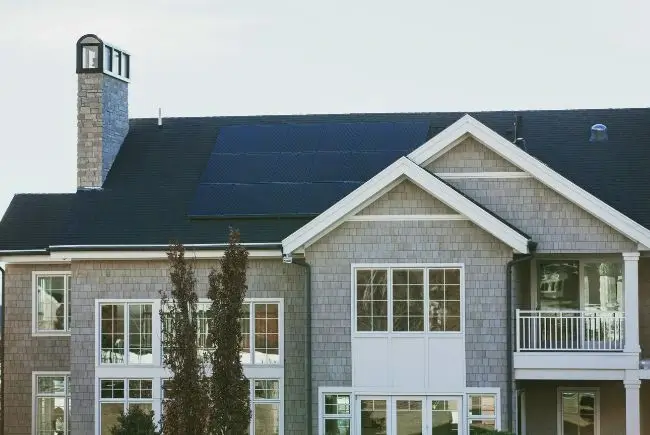
1. Save Big on Electricity Bills
A well-installed solar roof can give you long-term economic benefits through energy efficiency. Using solar energy and having your own electricity means you’ll have much lower utility bills. Depending on your energy usage, roof size, and sun exposure, you could save tens of thousands over the life of your solar roof system. Some homeowners pay next to nothing each month, especially if they pair their solar system with battery storage and time it with net metering.
2. Federal and Local Incentives
The federal government offers a Residential Clean Energy Credit, which offers a 30% tax credit for solar roofs installed through 2032. This solar investment tax credit alone can significantly reduce upfront costs.
Local utilities in Oklahoma, such as OG&E, offer net metering programs. This means any extra energy production your system produces during the day can be credited to your bill and used at night or in cloudy weather.
3. Boosted Home Value
Homes with renewable energy sources and clean energy production, such as solar roofs, tend to sell faster and for more money. Buyers are into the idea of lower utility bills and long-term energy savings. So, if you think you might sell your home in the future, getting a solar roof isn’t bad for an upgrade that’s also working to improve your home’s energy efficiency every day.
4. Long-Term Protection
Some solar shingles and metal roof systems come with serious warranties, like 25 years or more for power production and roofing performance. If you’re already planning to replace your roof soon, adding solar could give you a better return on that investment.
5. It Cuts Down on Greenhouse Gas Emissions
Just powering your home with solar can keep tons of greenhouse gas emissions out of the atmosphere every year, and you’ll be contributing to the fight against global warming. Additionally, one less household is dependent on fossil fuels, which is also harmful to our environment.
6. You Experience Energy Independence
There are financial options specifically designed for homeowners who want solar but don’t want to spend a lot of money upfront. Some companies offer zero-down installations, and some banks and credit unions have also started offering energy efficiency and solar loans. Either way, you’re swapping out part of your electric bill for a monthly payment that eventually goes away (unlike utility bills, which never do).
Potential Disadvantages of Solar Roofs
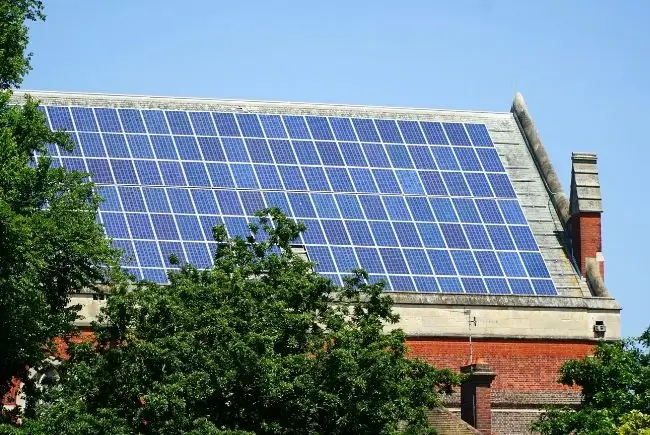
1. Upfront Cost
Compared to traditional roofing materials, solar roofs are much more expensive, even with tax credits. It’s a worthwhile investment, but the initial price might not be a practical choice for many homeowners. So, make sure you get multiple quotes from contractors so you have an idea of how much you’ll have to pay on average.
2. Your Existing Roof Must Be In Good Shape
Your entire roof’s structural integrity has to be solid before you can install any solar panels. Things like missing shingles, sagging spots, and soft decking can complicate things. Other factors, like the electrical panel and wiring, should also be checked before any type of solar system is installed.
3. Shade Can Affect Efficiency
Solar roofs need direct sunlight. If your home is heavily shaded by trees, chimneys, or taller buildings, it’s going to limit how much solar power you can generate. A little shade isn’t necessarily a deal breaker, but too much will put a serious dent in your return.
4. Not All Utility Companies Are Solar-Friendly
Some Oklahoma utility providers have caps or restrictions on how much energy you can feed back into the grid. Others charge connection fees or limit which systems qualify. It’s always worth checking the details before installing anything.
What You Should Know Before Installing a Solar Roof
1. First, Do a Roof Inspection
Get your entire roof inspected by reliable roofing companies (OKC) like Maupin Roofing. Our team can give you a real-world look at whether your roof is strong enough to handle solar, and what work (if any) needs to be done first.
2. Understand Your Energy Use
Pull out your last 12 electric bills and check your monthly usage in kilowatt-hours (kWh). That number will help your solar installer size your system correctly.
3. Think About Roof Direction
The overall effectiveness of your solar roof depends largely on how strategically placed it is, and can even be affected by your geographical location. South-facing roofs get the most consistent sun. East- and west-facing roofs can still work, but they’ll be slightly less efficient. And if you’ve got a north-facing roof with lots of trees, it might be time to consider ground-mounted solar or skip it altogether.
4. Know Your Financing Options
Solar panels can be paid for in cash, financed through low-interest energy loans, or leased. Each comes with pros and cons. Cash saves the most over time, while loans let you spread out the cost. Leases, on the other hand, are hands-off but offer fewer savings and usually disqualify you from tax credits.
Solar Systems Aren’t Right for Everyone—But a Healthy Roof Always Is
Solar roofs work best on homes with a solid roof structure, good sun exposure, and homeowners who can invest in a cost-effective roofing system. But if solar isn’t in the cards right now, don’t worry—keeping your roof strong, sealed, and weather-ready is always the right move, no matter what.
If your roof needs work before going solar, or perhaps it’s time for you to get a full roof replacement, Maupin Roofing is here to help. Get your free quote today!

Green Roofs for Commercial Properties: Suitability, Types & Benefits
Green roofing systems replace or layer over traditional materials with soil, native plants, and engineered drainage systems that allow the roof to become a living
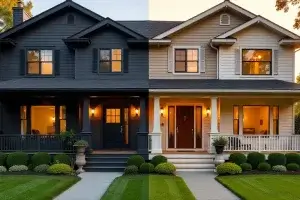
Boosting Curb Appeal with Exterior Colors: 12 Color Combos to Try
Before anyone notices your landscaping or your roofline, they notice color, which is why boosting curb appeal with exterior colors is such a powerful move.
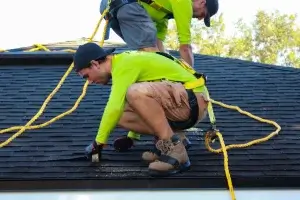
Residential Roof Maintenance Tips for Longevity
Your roof does more than cap off your home. It shields everything beneath it from Oklahoma’s heat, high winds, ice storms, and heavy rain. That’s
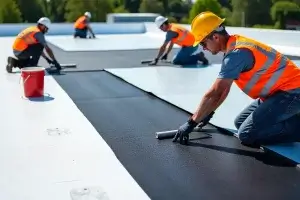
Modified Bitumen Roofs for Commercial Use: What to Know
Modified bitumen roofs for commercial use have become one of the most trusted options for flat and low-slope buildings for over a century. At Maupin
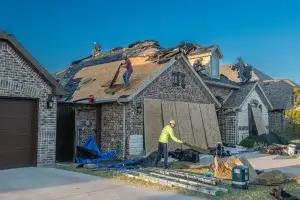
New Roof Installation Guide for Homeowners
As pros in the roofing industry, we know what really goes into a well-built roof and what can go wrong when corners are cut. A
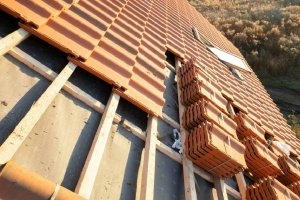
Best Time to Install a New Roof in Oklahoma
Something we often see is homeowners waiting too long to replace a worn-out roof, only to get caught in the middle of inclement weather or

